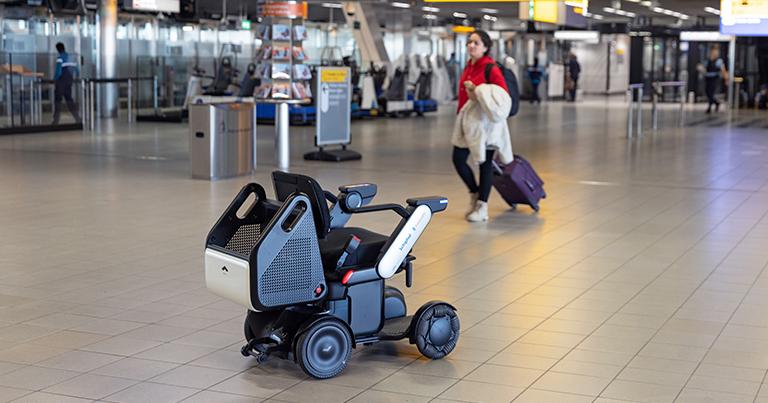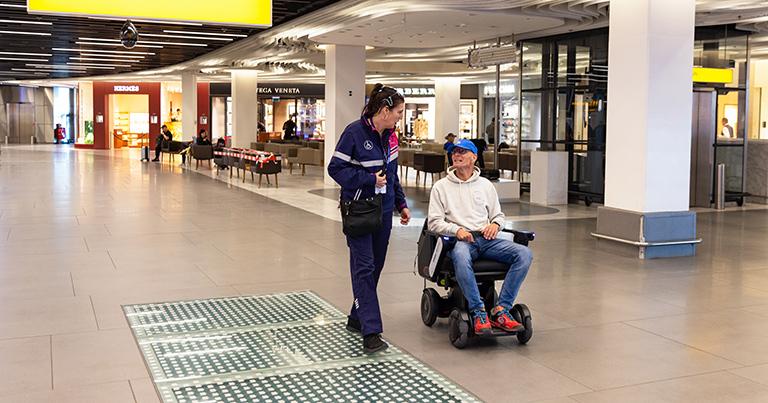
Amsterdam Airport Schiphol (a Corporate Partner of the FTE Digital, Innovation & Startup Hub) and Axxicom Airport Caddy have been testing autonomous mobility vehicles at the airport. The vehicles, with smart technology from personal transportation solutions company WHILL, are already used successfully at major hubs such as Tokyo International Airport. The service is part of Schiphol’s objective to make travelling as easy as possible for people with reduced mobility.
“We want to offer all travellers a pleasant travel experience at Schiphol,” said Patricia Vitalis, Director Airport Operations and Aviation Partnerships, Amsterdam Airport Schiphol. “That is why we are testing this innovation. With the autonomous vehicles, we are exploring how travellers with reduced mobility can find their way independently and safely at the airport. This fulfils the need of this group to be able to travel independently. We are curious about their experiences during this pilot.”
During the pilot, a number of travellers are being taken to their gate by the autonomous vehicles, which are designed to support the current passenger assistants, thereby increasing efficiency.
“The autonomous vehicles are a great solution for elderly travellers or people who cannot travel long distances due to medical reasons,” said Vincent Kas, Managing Director, Axxicom Airport Caddy. “But also for passengers who worry whether they will find their way. We are already helping these travellers with our passenger assistants. We expect this innovative solution to contribute to a future-proof service provision from our organisation.”
The autonomous vehicles have a luggage rack at the rear where hand luggage can be placed. The traveller can enter their destination on the service screen, for example their boarding gate. The vehicle then drives to this destination independently. The vehicle also has sensors that consider other travellers, obstacles and the surrounding environment. There is an emergency button on the vehicle and a seat belt to ensure safety. After arriving at the destination, the passenger disembarks, if possible, and the vehicle drives itself back to the starting point where new travellers can use it again.







